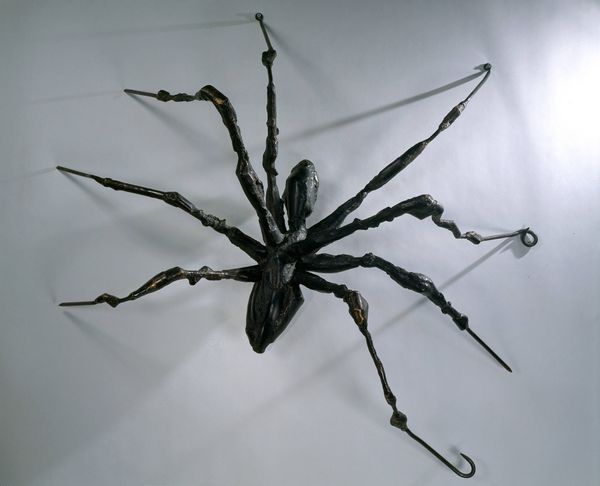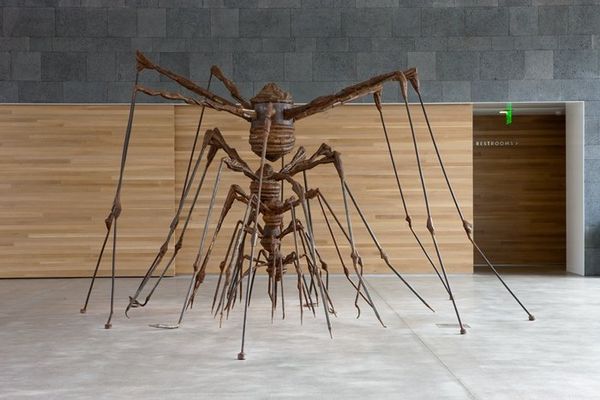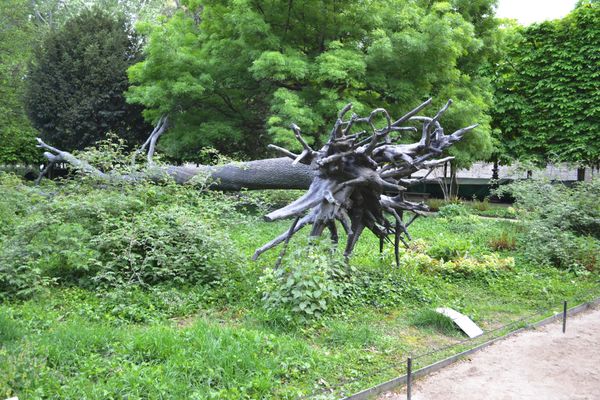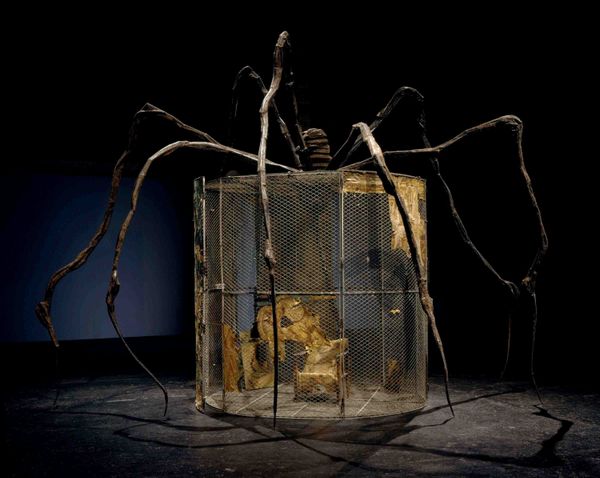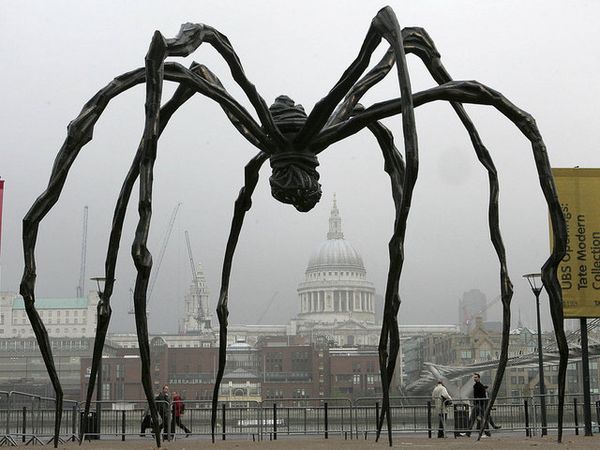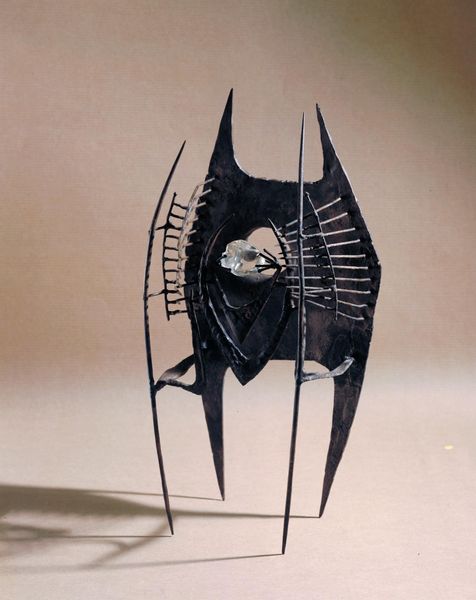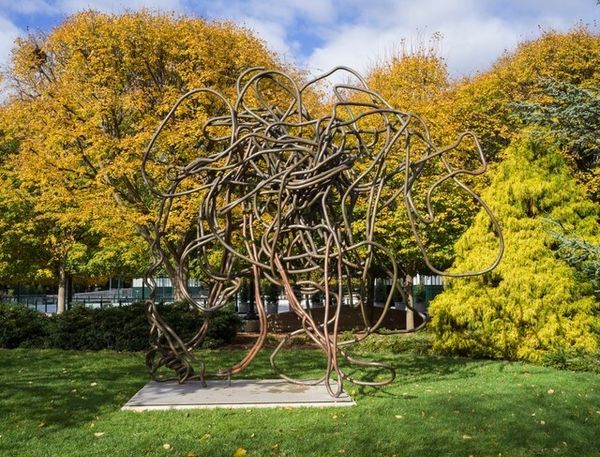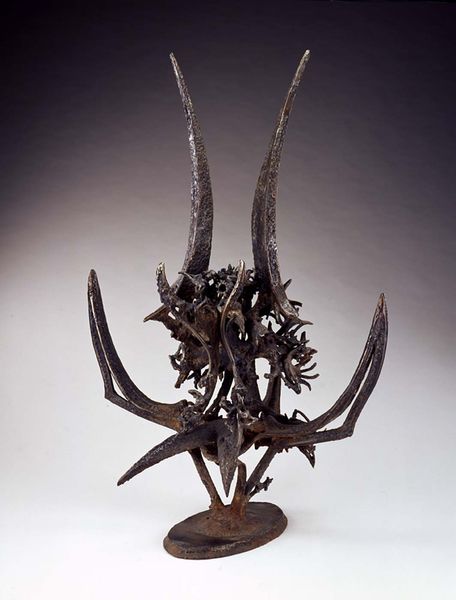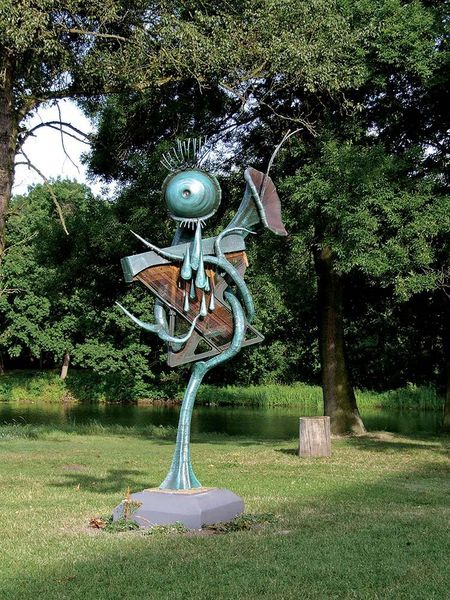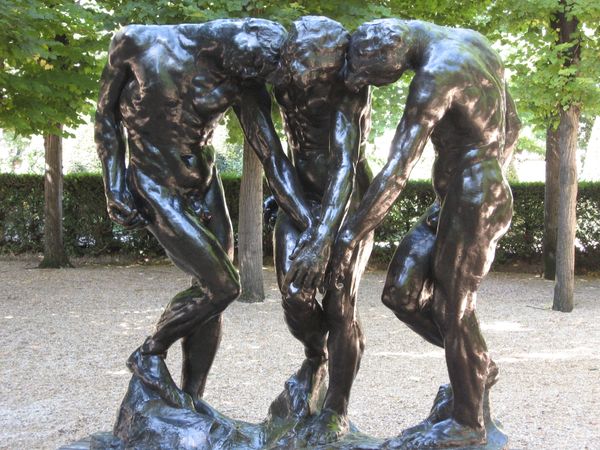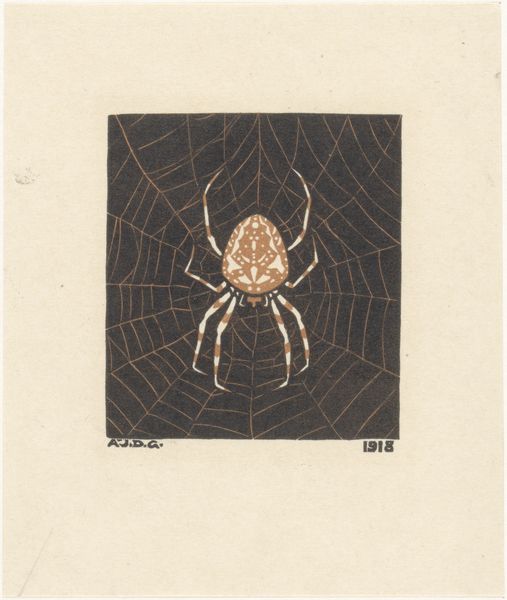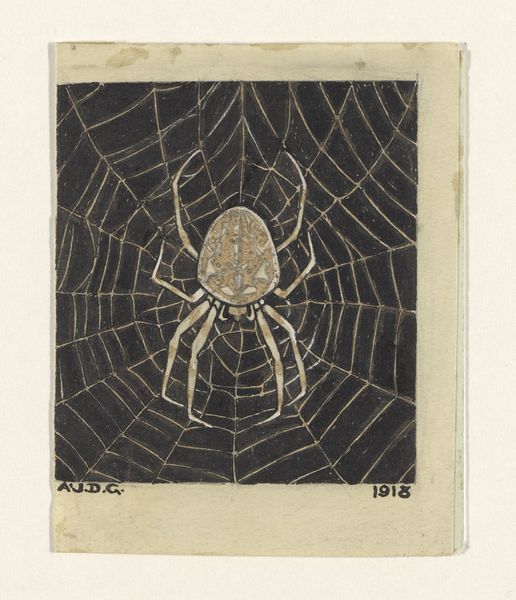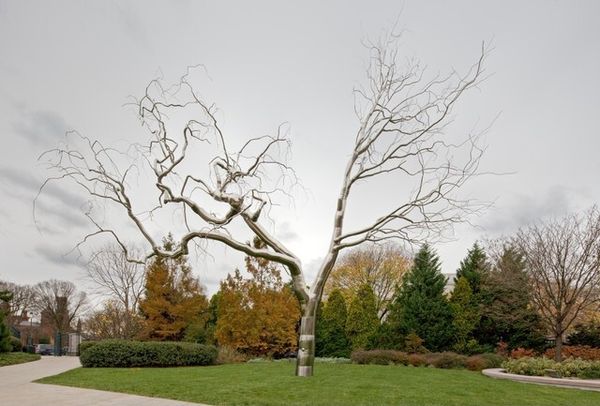
metal, sculpture
#
metal
#
structure
#
nature
#
form
#
geometric
#
sculpture
#
modernism
Dimensions: overall: 281.9 x 833.1 x 792.5 cm (111 x 328 x 312 in.)
Copyright: National Gallery of Art: CC0 1.0
Editor: Louise Bourgeois' *Spider*, dating from around 1996-97, constructed with metal, just absolutely dominates its space. Its scale, juxtaposed with the leafy environment, is pretty unsettling, even terrifying. What strikes you most about it? Curator: You know, terror isn't necessarily the only pathway in. I think this piece, on a deeply personal level, reflects the artist’s own complex relationship with her mother. It's an ode, of sorts. A celebration of her strength, skill as a weaver, and her protective nature. Look at the spindly legs – are they threatening, or embracing? It's that very duality that grabs me. What do you make of the material? Does the metal speak to you at all? Editor: Metal, of course, suggests industrial, unyielding, even cold. Which kind of complicates the idea of a maternal figure, I guess. I suppose that tension is sort of the point? Curator: Exactly. Life’s messy. Maternal figures are rarely straightforward saints, are they? The cage-like body – does it trap, or protect? And even spiders, creatures so often feared, are master architects and providers. The work really sings to me through those ambiguities. It invites you to linger with difficult feelings, maybe? Editor: Huh, I guess I hadn’t considered how nurturing a spider could be. Maybe there's something profound about acknowledging both the scary and caring aspects of, well, pretty much everything. I’ll never look at a spider the same way. Curator: Or our mothers! Which is, after all, what great art does; it forces us to rethink the world.
Comments
No comments
Be the first to comment and join the conversation on the ultimate creative platform.
